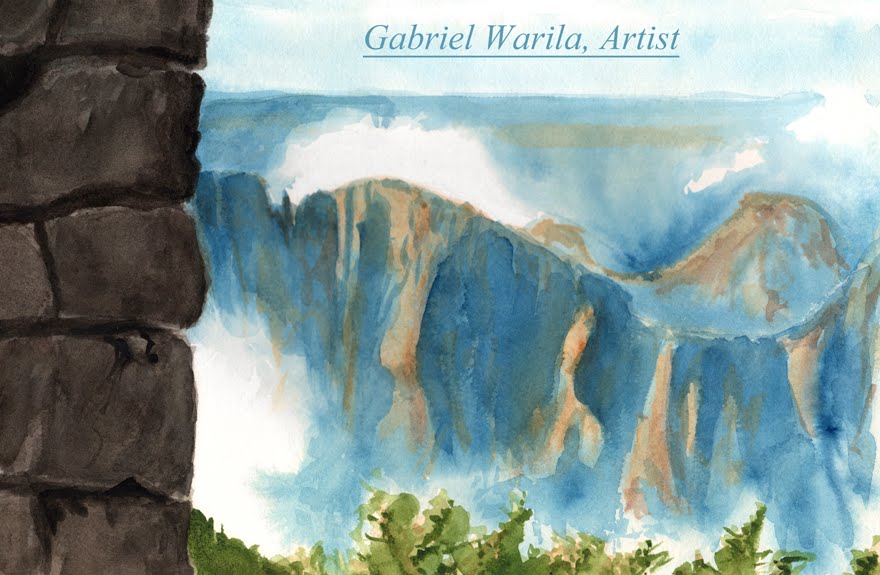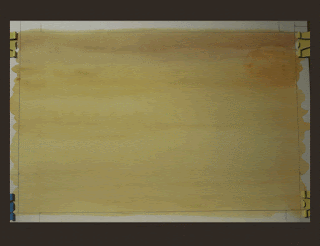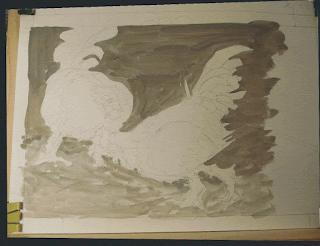Back from the creature design workshop! My classmates and I learned about designing realistic fictional creatures from Terryl Whitlatch; she has done many illustrations for biology and paleontology purposes, for books and fiction, and also for movies (such as Star Wars Episode I, where I first learned about her work). She was an excellent teacher, very helpful and dignified. It was good to meet her, and great to learn from her.
Terryl's theme through the workshop was designing fictional creatures that could theoretically evolve, live, and reproduce in a manner as close to reality as possible. She made a distinction between "chimeric" creatures–beings put together from the parts of various creatures, such as classically mythological creatures like centaurs, griffons, the Sphinx–and "discrete" creatures–beings that could theoretically exist and be molded by time, their environment, genetics, and so on. If they had elements inspired by different creatures, they would be worked into the design as if the creature naturally had those traits. Our mission in this particular workshop was to design flying winged carnivore/predator creatures.



During the workshop, I made two creatures. Since I had sea creatures on the brain, I sketched ideas out for combining various existing animals, and ended up combining a krill and a flying fish to create a flying krill. I envisioned it as a small creature, one that would frequent the very top layers of the ocean, hunting smaller organisms and flying away from danger when threatened. I shortened and smoothed out the krill's body, and gave it angled wings, large enough that it could dart away from danger, but not so large they would interfere with swimming. (Rather, they would assist in helping the krill swim.) It had frilled legs to give it traction against the water and swim properly. And it had the eyespot on its tail to direct its predators away from its vital parts. The feathery antennae should've realistically be more like the actual krill's antennae, but I was feeling fancy and made them frilled like a moth's antennae.




The second creature was a combination of vulture and nighthawk. This one was a large bird, living on a planet with one-sixth the gravity of earth. It could fly much higher and spend more time in the air than a bird from Earth. With lighter gravity, its prey would also fly higher and be easier to hunt for. Inspired by the vulture's capability to cruise for hours, and the nighthawk's lifelong sustenance on insects, I combined those attributes and came up with a cruiser hawk, a four-winged creature that would spend almost all of its life on its wings, moving up and down through the atmosphere and living on the giant insects that it shared the planet's atmosphere with.
Terryl brought samples of Copic markers and pens, which we used to make our illustrations. I liked how they worked, I will likely buy a set of them. The workshop was excellent in all aspects. If you like drawing creatures and get a chance to attend an event with Terryl, do it. You'll enjoy it.









































